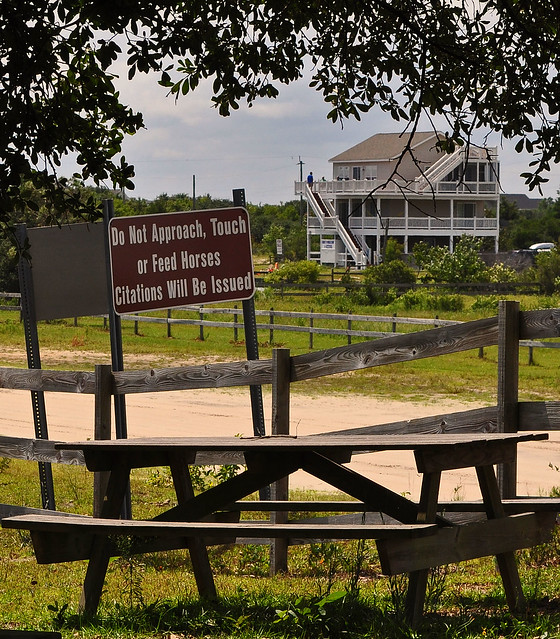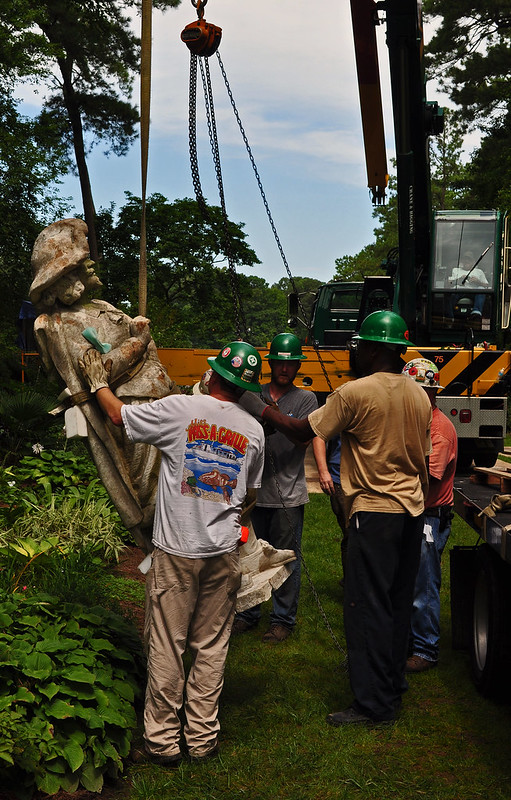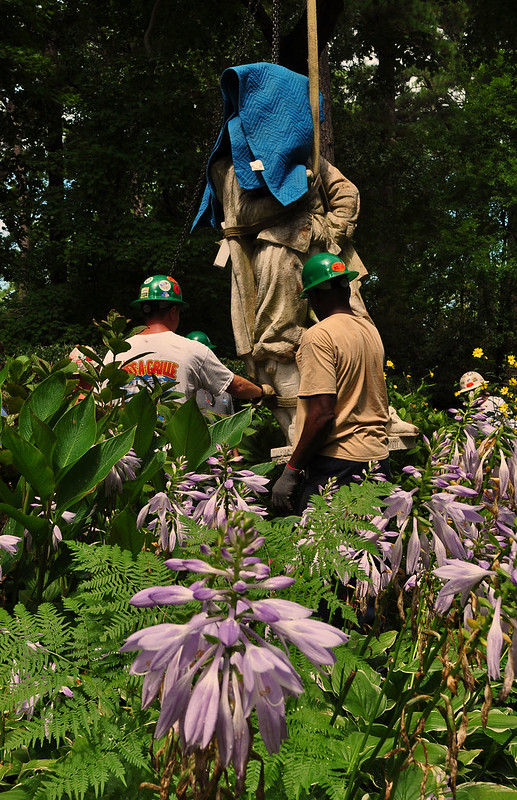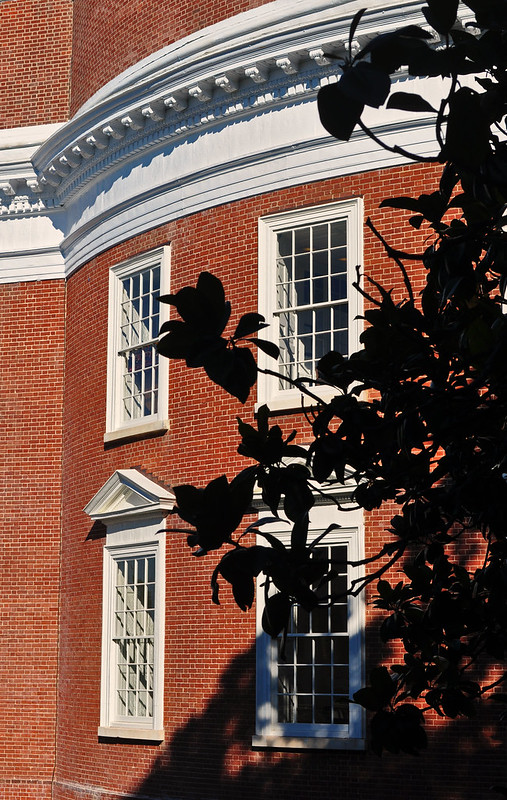This past weekend we left the flatland and headed west to the foot of the mountains. After a day floating on the James in the simple comfort of an
inner tube, we spent the night in Charlottesville, one of my favorite places. Our hotel was just down the hill and a short walk from the
University of Virginia (UVA). Sunday morning I was able to explore the grounds, camera in hand. In case you didn't know, the university was founded by Thomas Jefferson in 1819, and he was also its first architect. Jefferson was so proud of his role in the founding of UVA (the first non-sectarian university in the country) he had it added to his tombstone, though he opted not to mention he was our third president. Jefferson designed the Rotunda, the university's centerpiece, as a half scale rendition of Rome's Pantheon. Flanking either side of the Rotunda are a series of pavilions and colonnades, where faculty still teach students and where both are still housed. The buildings enclose a large lawn, and behind them are a series of garden spaces enclosed by serpentine walls, also designed by Mr. Jefferson. Together they form an "academical village", which is a UNESCO World Heritage site, and from which many an architect and city planner have drawn inspiration. Although the grounds were quiet on a Sunday morning in August, I could not help but feel the presence of the many others who have walked here before.

The Rotunda is currently under renovation, hence the black cloth covering the column capitols. It nearly burned to the ground in 1895, and has suffered some bad renovations. However, its current state is as close to what Jefferson would recognize, if he had lived long enough to see its completion.
On the top floor of the Rotunda is a library, and in the ceiling is an oculus shinning down like the eye of God, though Jefferson would probably disagree with me.
Edgar Allan Poe resided in this chamber, No. 13.
Other windows provide a more contemporary view. I wonder what Jefferson would think about our world-at-your-fingertips society?
The serpentine walls are not only attractive, I am sure they also appealed to Jefferson's practical side. The walls' shape makes them strong and consequently only require a one brick thickness.
Historians believe that the gardens were largely ornamental in nature, though things for the table were grown there as well. They also provided a quiet place to visit the privy, many of which still stand.
Your humble blogger had a chance to hug the largest ginkgo he has ever seen, the Pratt Ginkgo, and I need to plan a return visit to see its fall glory.
I hope this picture laden post has not crashed your computer or has used all your allotted data on your cell phone, but if you want to see more you can
visit my Flickr page.












































































